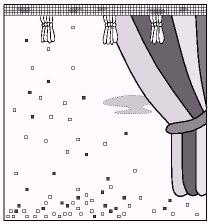 |
keeping secrets |  |
|
Benjamin Franklin |
 |
keeping secrets |  |
|
Benjamin Franklin |
This is a annotated course diary of a course given twice during the academic year 1999-2000. This material is not principally intended for students, but is primarily directed at those who may want to teach such a course. The course covered some of the mathematics of communication and was directed at liberal arts students assuming only minimal math background. The top row of links below (History ... Outcomes) lead to more detailed information. Each meeting of the course is further described in the links below (Lecture #1 ... #28), along with material created to use in class and as homework. The support of the National Science Foundation (grant number DUE-9850071) for the preparation of much of this material is gratefully acknowledged. I would be happy if what is displayed here were used by others. Please let me know if this occurs. Thank you.
| Stephen Greenfield, Math Department Rutgers University, New Brunswick, New Jersey e-mail address: greenfie@math.rutgers.edu home page: http://www.math.rutgers.edu/~greenfie |

|
The typesetting language TeX has been used to display mathematics. You can try this example [PDF|PS|TeX]. The source file is available for those who wish to examine or modify it under the TeX link, while Adobe PDF and Postscript versions are available under the PDF and PS links. The variant of TeX used is plain TeX in all but two cases (LaTeX was used for material in Lectures 13 and 25). The macro package epsf was used to include Postscript pictures in five TeX files. The names of these pictures are given in the first lines of the indicated files, and the pictures are available in the directory containing the TeX files. Answers to some homework problems can be found after the "/end" statements in the corresponding TeX file. |
|
| A steganographic example discussed in Lecture #24 |
Secret sharing at Piscataway High School |
|---|